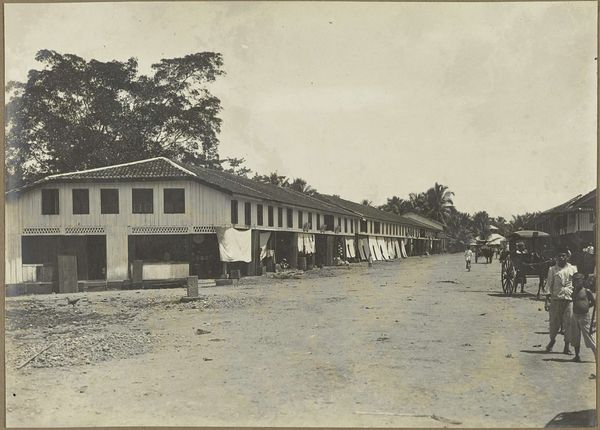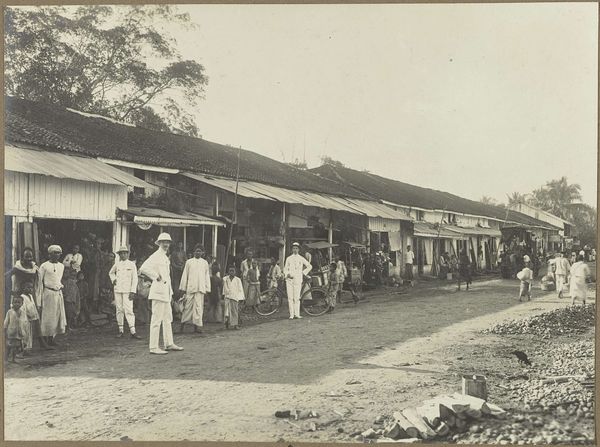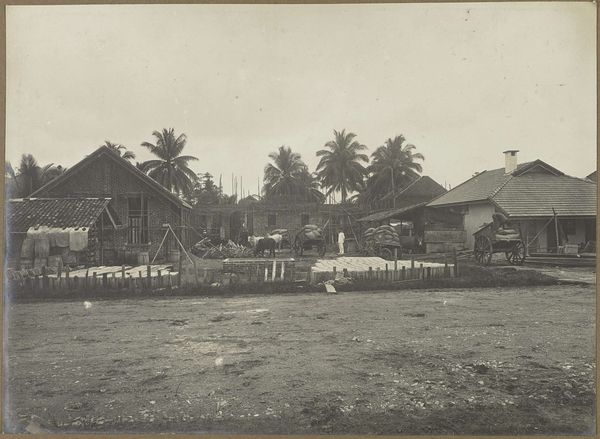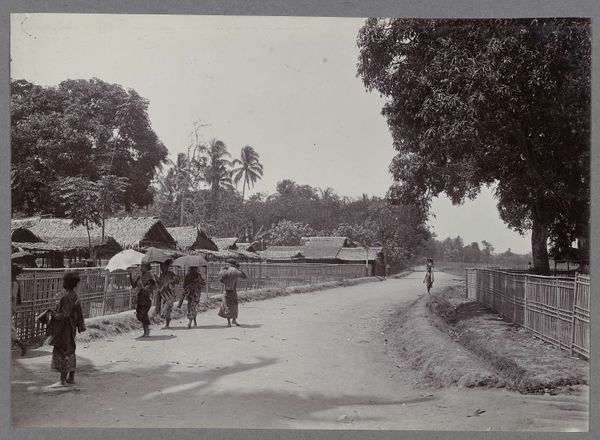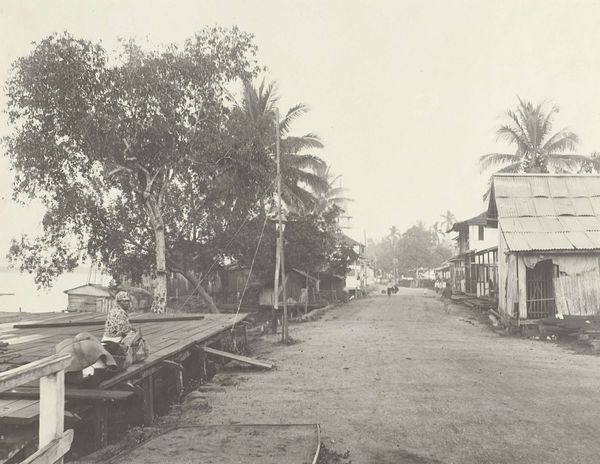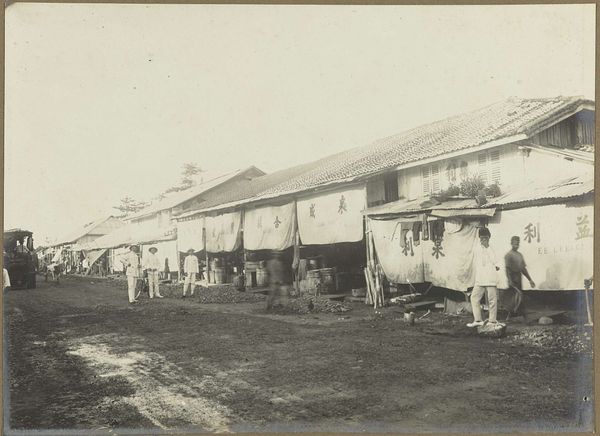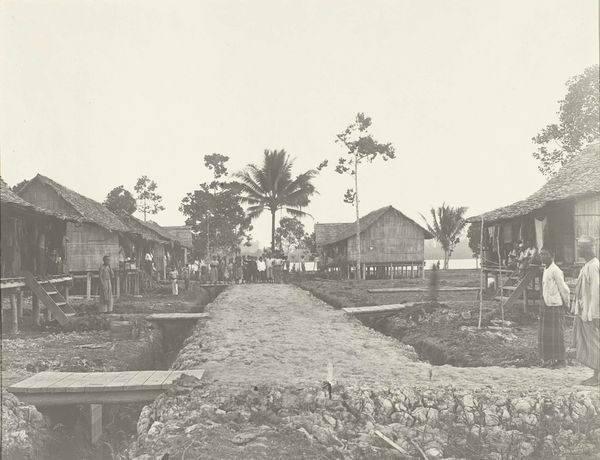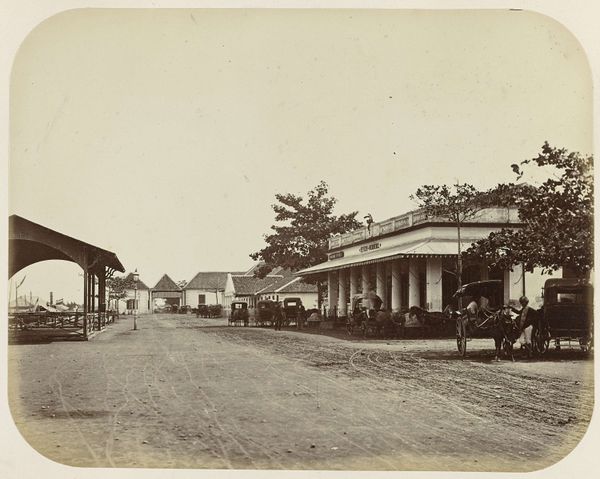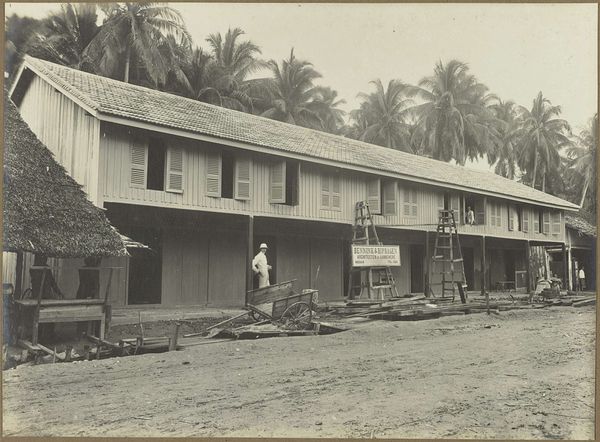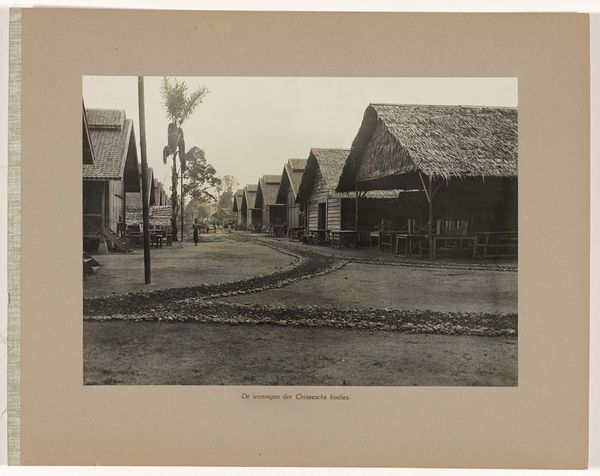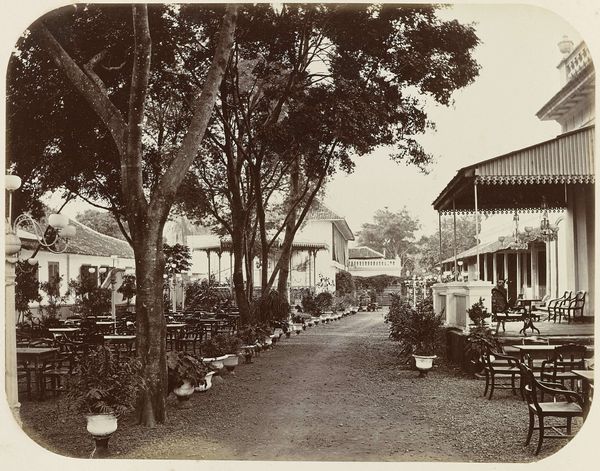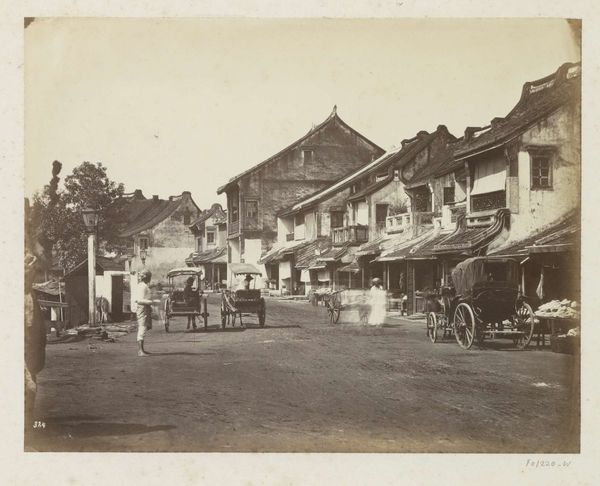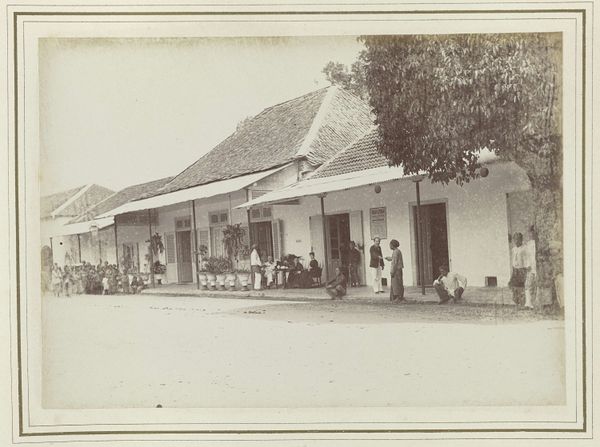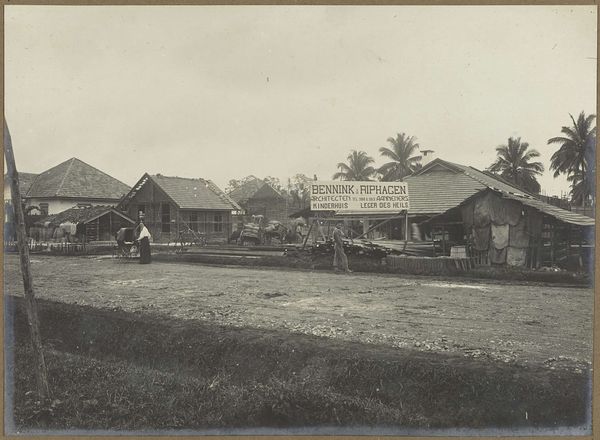
#
excavation photography
#
aged paper
#
toned paper
#
photo restoration
#
colourisation
#
charcoal drawing
#
historical photography
#
old-timey
#
19th century
#
watercolor
Dimensions: height 147 mm, width 202 mm
Copyright: Rijks Museum: Open Domain
Editor: This photograph, titled "Straatgezicht," dates from 1914 to 1919. It’s a compelling street scene. The weathered paper and the way the light filters across the buildings create this hazy, almost dreamlike quality. What symbols do you notice in this scene? Curator: What strikes me immediately is the interplay between public and private space. The buildings, elevated on stilts, offer a shadowed, semi-enclosed area beneath. What activities do you imagine took place under those structures? What are the cultural implications of these architectural forms? Editor: I hadn’t thought of the spaces underneath as anything other than structural, but now that you mention it, they do seem significant. Maybe storage? Or workspaces shaded from the sun? Does the presence of the figures walking down the street give any clues to their society and activities? Curator: Precisely. Consider the placement and relative size of the human figures; they seem dwarfed by the architecture. The visual hierarchy subtly communicates social dynamics. Think about the temporality embedded within the image, capturing the stillness of everyday life amidst a larger, potentially turbulent historical period. What can it tell us about how a culture processes the relentless tides of change? Editor: That's a very thought-provoking interpretation. I hadn’t considered the figures' scale in relation to the buildings. And your insights made me wonder about the symbolism of light and shadow, giving depth and a specific meaning in their culture, making me wonder how this imagery conveys emotional nuances as well. Curator: Exactly. Cultural memory often resides in these seemingly mundane images. We uncover not just what life *looked* like, but also what it *felt* like. A photograph captures how a society saw itself and the world around it. What would you like to know about it? Editor: I definitely have a new appreciation for the many layers within what initially seemed like a simple street scene, its meaning enriched and transformed. I was too drawn by the sepia quality to see the many different meanings and nuances. Curator: That's what makes art so fascinating, it shows our biases and directs our attention. There’s always more to see. It invites contemplation beyond surface aesthetics and makes us dig deep into history, society, and the cultural memory, all captured in a single frame.
Comments
No comments
Be the first to comment and join the conversation on the ultimate creative platform.
